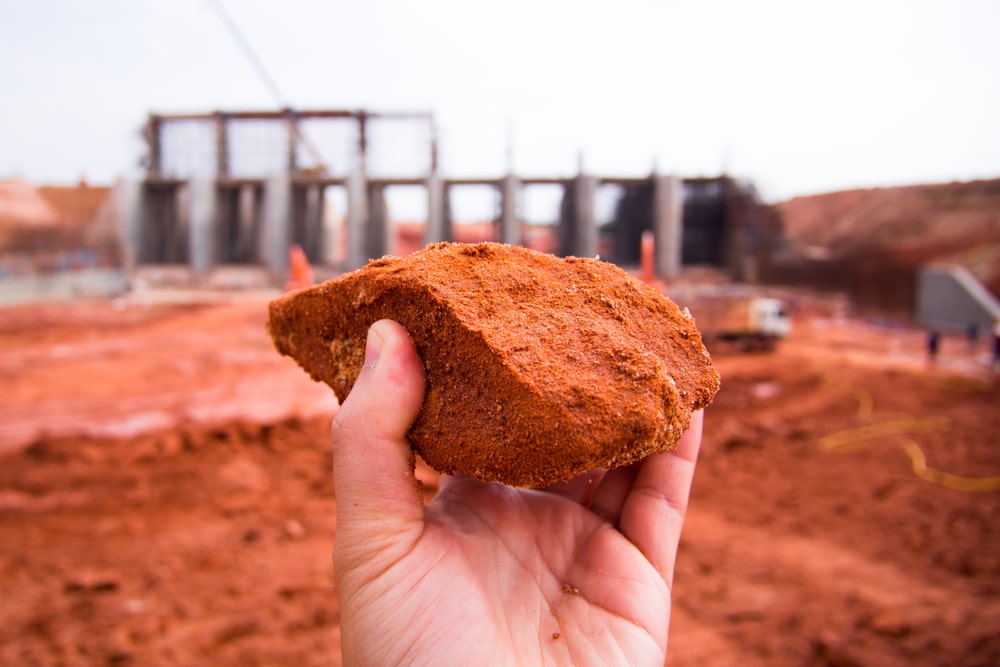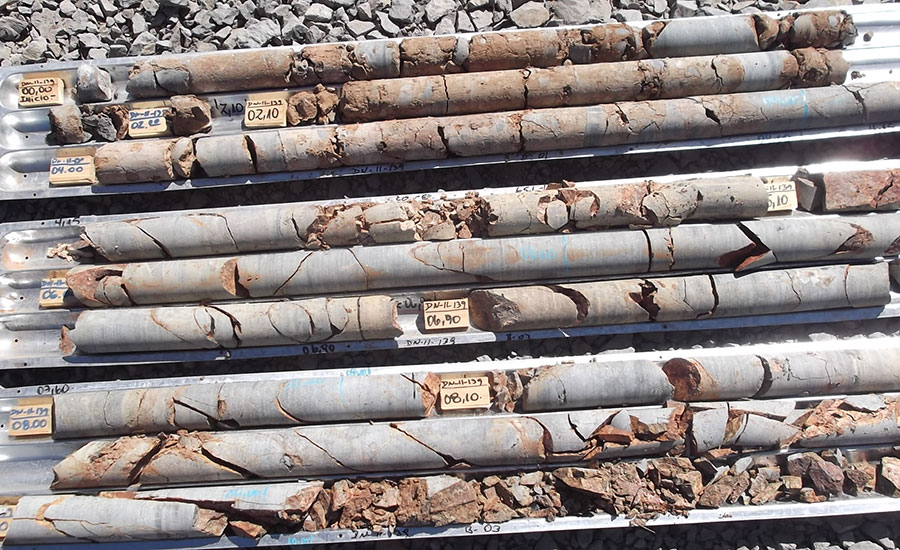Leading Geotechnical Companies in South Africa: Who You Should Know
Leading Geotechnical Companies in South Africa: Who You Should Know
Blog Article
The Significance of Geotechnical Engineering in Addressing Environmental Difficulties and Enhancing Building Security
Geotechnical design works as a cornerstone in the intersection of environmental stewardship and building and construction safety, giving vital understandings right into the behavior of dirt and rock under different problems. This self-control not just addresses pressing environmental challenges such as dirt erosion and groundwater protection however likewise improves the toughness of infrastructure versus natural hazards. By applying strategic website investigations and customized mitigation measures, geotechnical designers play an essential role in protecting both human lives and ecological integrity. Yet, the complexities of these obstacles elevate vital questions regarding the future instructions of this field and its implications for lasting growth.

Role of Geotechnical Engineering
Geotechnical design plays an essential role in the style and building of framework by dealing with the actions of soil and rock products under numerous problems. This field of design is important for comprehending the communication in between frameworks and the ground, that includes establishing the load-bearing capacity of dirt, evaluating stability, and forecasting prospective negotiation or failure.
Geotechnical engineers are accountable for conducting site investigations, which include tasting and testing soil and rock to gather data on their physical and chemical properties. This info is essential for creating structures, retaining walls, and various other earth-retaining structures that make sure safety and long life. Geotechnical engineering informs the option of appropriate construction techniques and products, thus minimizing threats connected with soil habits.
Furthermore, the integration of geotechnical design concepts into metropolitan planning and environmental management is vital for addressing obstacles such as ground contamination and groundwater administration. By understanding geotechnical elements, designers can create lasting remedies that boost the durability of framework versus natural threats, while also advertising environmental stewardship. Ultimately, the duty of geotechnical engineering is crucial for attaining secure, resilient, and eco aware construction practices.
Dirt Erosion Reduction
Soil erosion poses a substantial threat to both ecological security and infrastructure honesty, influencing approximately 24 billion loads of abundant dirt lost every year worldwide. This sensation is exacerbated by variables such as deforestation, urbanization, and poor farming methods. Geotechnical engineering plays an essential duty in creating efficient dirt erosion reduction approaches that secure both the atmosphere and building tasks.
One method involves the implementation of disintegration control methods such as plants growing, which supports soil via origin systems. Additionally, the building and construction of maintaining wall surfaces and terraces can effectively reduce surface area runoff and protect at risk areas from disintegration. Proper drainage design is likewise critical; it lessens water build-up and routes excess overflow far from vital structures.
Additionally, geotechnical designers use soil stablizing strategies, such as the application of geotextiles and eco-friendly mats, to boost soil cohesion and protect against degradation - all about geotechnical engineering. Routine tracking and assessment of erosion-prone websites allow prompt interventions, making certain lasting sustainability. By incorporating these methods, geotechnical engineering not only minimizes the influences of soil disintegration yet also contributes to the strength of infrastructure versus ecological challenges, ultimately cultivating a safer and extra sustainable developed setting
Groundwater Protection Techniques
Groundwater works as a crucial source for alcohol consumption water, agriculture, and commercial processes, making its defense crucial for ecological sustainability and public wellness. Reliable groundwater security techniques are vital in alleviating contamination threats and ensuring the durability of this resource.

Normal surveillance of groundwater high quality is likewise crucial, making it possible for very early detection of contamination resources and promoting timely remediation efforts. Utilizing advanced modern technologies, such as geophysical studies and remote sensing, help in recognizing potential dangers to groundwater gets.
In addition, public education and stakeholder engagement are crucial, fostering neighborhood support for groundwater protection campaigns. geotechnical specialist. By combining governing measures, technological developments, and neighborhood involvement, we can produce an extensive framework that safeguards groundwater sources while promoting lasting development and building techniques
Landslide Danger Administration
Landslides pose significant dangers to both human safety and security and infrastructure, making effective danger management approaches necessary. Geotechnical design plays an important role in identifying, analyzing, and mitigating landslide dangers. A thorough understanding of slope stability, dirt mechanics, and hydrology is crucial for developing effective threat administration strategies.
The primary step in landslide danger management involves comprehensive website investigations, that include geological mapping and soil screening. These investigations help designers evaluate the capacity for landslides by identifying crucial elements such as incline angles, dirt composition, and water material. Utilizing advanced innovations such as remote picking up and geophysical surveys can boost the accuracy of these analyses.
As soon as threats are determined, appropriate mitigation actions can be implemented. These may consist of design services such as preserving wall surfaces, drainage systems, and incline stablizing strategies. Keeping an eye on systems should be established to discover indicators of ground activity and adjustments in water degrees, enabling for proactive treatments.

Enhancing Construction Security
Construction sites usually present a myriad of hazards that can endanger worker safety and task stability. Geotechnical design plays a crucial role in enhancing building safety and security by giving crucial understandings into subsurface conditions. Through thorough dirt and Resources rock evaluation, geotechnical designers can recognize possible dangers, such as dirt instability, groundwater problems, and seismic vulnerabilities, which might jeopardize the safety of building and construction activities.
Applying geotechnical options, such as proper foundation layout and the usage of preserving structures, alleviates these risks significantly. These options not just make sure the security of the frameworks being constructed but additionally produce a much safer working atmosphere for building and construction personnel. Furthermore, rigorous tracking and evaluation of site problems throughout the construction procedure are important. Utilizing sophisticated technologies like ground-penetrating radar and inclinometer systems enables real-time information collection, permitting find this timely treatments when dangers are detected.
In addition, fostering a culture of safety through training and adherence to established safety and security procedures better enhances building and construction site safety. By integrating geotechnical know-how into the planning and execution stages, building and construction tasks can attain higher safety requirements, eventually safeguarding workers and making certain effective job conclusion.
Conclusion
In final thought, geotechnical engineering serves as a critical discipline in promoting and dealing with environmental obstacles building safety and security. With reliable soil disintegration reduction, groundwater defense techniques, and landslide risk administration, geotechnical engineers add to the advancement of durable facilities.
Geotechnical design offers as a cornerstone in the intersection of environmental stewardship and building security, supplying essential understandings right into the actions of dirt and rock under various problems. Geotechnical design educates the choice of ideal Homepage building approaches and materials, therefore decreasing risks associated with dirt actions.
Geotechnical engineering plays a critical function in creating effective soil erosion mitigation approaches that secure both the environment and building jobs.
Furthermore, geotechnical designers employ soil stablizing strategies, such as the application of geotextiles and biodegradable floor coverings, to boost dirt cohesion and avoid degradation. Via extensive soil and rock evaluation, geotechnical designers can recognize potential dangers, such as soil instability, groundwater issues, and seismic vulnerabilities, which may jeopardize the security of building and construction tasks.
Report this page